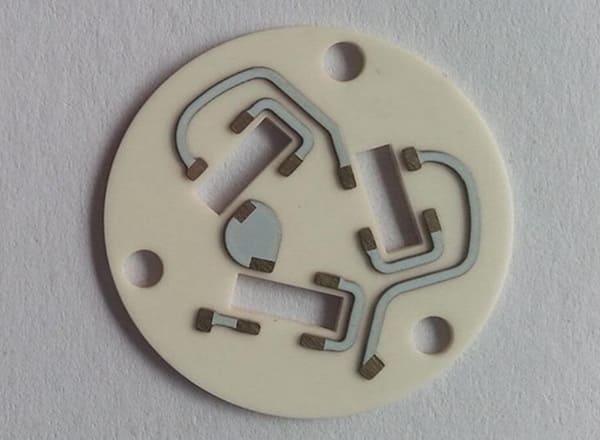Which Dopants Reduce or Enhance Alumina Electrical Resistivity?
Alumina, or aluminum oxide (Al₂O₃), is one of the most widely used materials in various industrial applications, including ceramics, electronics, and as a substrate in semiconductor technology. Its unique properties, such as hardness, high melting point, and insulating nature, make it valuable for many uses. However, one of its key characteristics that affects its performance is its electrical resistivity. Electrical resistivity is a measure of how strongly a material opposes the flow of electric current. In applications where electrical properties need to be fine-tuned, dopants are introduced into alumina to either reduce or enhance its resistivity.
This article aims to explore how various dopants impact alumina’s electrical resistivity. Understanding which dopants achieve desired resistivity changes is crucial for optimizing alumina’s performance in diverse applications. We will examine the dopants that lower or increase resistivity, analyze their effects, and address the challenges of implementing doping strategies, offering insights for informed material design.
At Advanced Ceramics Hub, we specialize in high-quality alumina ceramic products with various forms and specifications, ensuring optimal performance for industrial and scientific applications.

Overview of Alumina and Electrical Resistivity
Electrical resistivity is a fundamental property that describes how strongly a material resists the flow of electric current. The lower the resistivity, the better the material conducts electricity. For materials like metals, resistivity is typically low, while insulators like ceramics or semiconductors have high resistivity. The resistivity of a material is influenced by various factors, including temperature, the structure of the material, and the presence of impurities or dopants.
In the case of alumina, its intrinsic resistivity is relatively high due to its insulating properties. However, when dopants are introduced into the alumina structure, they alter the way charge carriers (such as electrons) move through the material, thereby affecting its resistivity.
Dopants—typically include metal oxides or elements—in concentrations as low as 0.1–1 wt% to alter alumina’s properties. Dopants can introduce charge carriers, create defects, or change grain boundary behavior, thereby reducing or enhancing resistivity. The choice of dopant depends on the desired electrical outcome and application requirements, making it essential to understand their specific effects.
Understanding how these dopants interact with the alumina lattice and charge carriers is crucial to understanding their effect on electrical resistivity.
Looking for top-quality alumina products? Explore Advanced Ceramics Hub’s selection.
Types of Dopants Used in Alumina
Dopants can be classified based on their interaction with the alumina lattice, which consists of Al³⁺ cations and O²⁻ anions arranged in a corundum structure. The classification helps understand how dopants affect electrical properties:
- Cationic Dopants: These substitute aluminum ions (Al³⁺) in the lattice. For example, Mg²⁺ (from MgO) introduces a charge imbalance that reduces conductivity, while Ti⁴⁺ (from TiO₂) adds excess electrons, enhancing conductivity. Cationic dopants are the most common due to their direct impact on the alumina lattice.
- Anionic Dopants: These affect the oxygen lattice (O²⁻), though they are less common in alumina due to its stable oxide structure. Anionic dopants may influence defect formation indirectly, but are rarely used for resistivity modification.
- Interstitial Dopants: Small ions or atoms occupy interstitial sites within the lattice, creating defects that can affect charge transport. These are less prevalent in alumina but may occur with certain dopants like rare earth elements.
- Grain Boundary Dopants: Some dopants, such as MgO or Y₂O₃, segregate at grain boundaries in polycrystalline alumina, influencing intergranular resistivity. This can either enhance insulation (e.g., MgO) or create conductive pathways (e.g., TiO₂).
✅ Common Dopants:
Several dopants are frequently used to tailor alumina’s properties, particularly its electrical resistivity. These dopants are typically metal oxides or elements added in low concentrations (0.1–1 wt%) to achieve specific effects. The most common dopants include:
- Magnesium Oxide (MgO): Enhances electrical resistivity by stabilizing the alumina lattice and reducing defect-related conductivity, making it ideal for insulating substrates in microelectronics.
- Titanium Dioxide (TiO₂): Reduces resistivity by introducing donor levels that facilitate electron conduction, suitable for applications like oxygen sensors.
- Iron Oxide (Fe₂O₃): Lowers resistivity through defect formation, such as oxygen vacancies, commonly used in gas and humidity sensors.
- Chromium Oxide (Cr₂O₃): Modifies resistivity variably, often reducing it by creating conductive pathways, and is used in optical sensors or conductive ceramics.
- Yttrium Oxide (Y₂O₃): Increases resistivity by enhancing lattice stability and forming insulating barriers at grain boundaries, ideal for high-voltage insulators.
- Zirconia (ZrO₂): Occasionally used to improve mechanical properties and influence resistivity by altering defect structures.
✅ Effects of Dopant Concentration
The concentration of dopants is critical to their effectiveness. Low concentrations (0.1–1 wt%) typically achieve the desired property changes without disrupting the alumina lattice significantly. Higher concentrations may lead to:
- Phase Segregation: Excess dopants can form secondary phases, such as spinels (e.g., MgAl₂O₄ with MgO), which may alter electrical properties unpredictably.
- Defect Clustering: High dopant levels can cause defect clustering, reducing the uniformity of resistivity changes.
- Mechanical Property Changes: Excessive doping may compromise alumina’s mechanical strength or thermal stability, necessitating a balance between electrical and structural performance.
Explore our optimized alumina products.
Dopants That Reduce Alumina Electrical Resistivity
Certain dopants are effective at reducing alumina’s electrical resistivity, enabling its use in applications requiring controlled conductivity. Common dopants that lower resistivity include:
- Titanium Dioxide (TiO₂): Introduces donor levels that enhance electron conductivity.
- Iron Oxide (Fe₂O₃): Promotes defect formation, increasing charge carrier concentration.
- Chromium Oxide (Cr₂O₃): Facilitates conductivity under specific conditions, often used in sensors.
The mechanisms by which these dopants reduce resistivity are multifaceted:
- Introduction of Charge Carriers: Dopants like TiO₂ introduce Ti⁴⁺ ions, which substitute Al³⁺ in the alumina lattice, creating excess electrons that act as charge carriers, lowering resistivity. Similarly, Fe₂O₃ introduces Fe³⁺ ions, which can generate oxygen vacancies that enhance ionic or electronic conduction.
- Formation of Conductive Pathways: Dopants may segregate at grain boundaries, creating conductive pathways. For example, Cr₂O₃ can form localized conductive regions, reducing overall resistivity in polycrystalline alumina.
- Defect States: Oxygen vacancies or interstitial defects induced by dopants like Fe₂O₃ create defect states within the band gap, facilitating charge transport and reducing resistivity.
Industrial Applications:
✅ A. Electrostatic Chucks (Semiconductor Manufacturing)
- Dopant: 0.3 wt% TiO₂
- Resistivity: 10⁸–10⁹ Ω·cm
- Requirement: Uniform conductivity for wafer clamping
✅ B. Self-Heating Substrates
- Dopant: 0.7 wt% Nb₂O₅ + 0.1 wt% TiO₂
- Resistivity: 10⁴–10⁵ Ω·cm @ 500°C
- Use: Aerospace de-icing systems
✅ C. Transparent Conductive Oxides (TCOs)
- Dopant: 0.5 wt% Sn⁴⁺ (co-doped with Ti⁴⁺)
- Resistivity: 10²–10³ Ω·cm (thin-film form)
- Application: Touchscreen coatings
Dopants That Enhance Alumina Electrical Resistivity
Other dopants increase alumina’s electrical resistivity, reinforcing its insulating properties for applications requiring minimal current flow. Common dopants that enhance resistivity include:
- Magnesium Oxide (MgO): Stabilizes the lattice and reduces defect-related conductivity.
- Yttrium Oxide (Y₂O₃): Enhances insulation by minimizing charge carrier mobility.
The mechanisms for enhancing resistivity include:
- Reduction of Defect-Related Conductivity: MgO introduces Mg²⁺ ions, which create charge imbalances that reduce oxygen vacancies or other defects that could conduct electricity. This stabilizes the insulating properties of alumina.
- Stabilization of Insulating Properties: Y₂O₃ strengthens the lattice structure, increasing the energy barrier for charge carrier movement, thereby enhancing resistivity. This is particularly effective in high-temperature environments where insulation is critical.
- Grain Boundary Insulation: Both MgO and Y₂O₃ segregate at grain boundaries, forming insulating barriers that block intergranular conduction, further increasing resistivity.
Industrial Applications
✅ A. High-Voltage Insulators
- Dopant: 0.1–0.3 wt% MgO
- Resistivity: >10¹⁶ Ω·cm
- Use: Power transmission bushings, spark plugs
✅ B. Semiconductor Packaging
- Dopant: 0.05 wt% Li₂O + 0.1 wt% SiO₂
- Resistivity: >10¹⁵ Ω·cm @ 200°C
- Requirement: Low dielectric loss at high frequencies
✅ C. Transparent Insulating Coatings
- Dopant: 0.2 wt% Cr₂O₃ (for UV blocking)
- Resistivity: 10¹⁴–10¹⁵ Ω·cm
- Application: Display glass encapsulation
Request a custom quote for high-quality alumina products.
Comparative Analysis of Dopant Effects
The choice between dopants that reduce or enhance resistivity depends on their specific effects, which vary based on their chemical nature and interaction with the alumina lattice. Dopants like TiO₂ and Fe₂O₃ lower resistivity by introducing charge carriers or defects, making them suitable for conductive applications, while MgO and Y₂O₃ enhance resistivity by stabilizing the lattice and reducing conduction pathways, ideal for insulating applications.
Several factors influence dopant performance:
- Concentration: Optimal doping levels (0.1–1 wt%) maximize desired effects, while excessive doping can lead to phase segregation or unintended property changes.
- Valence State: The ionic charge (e.g., Ti⁴⁺ vs. Mg²⁺) affects defect formation and charge balance, determining whether resistivity increases or decreases.
- Processing Conditions: Sintering temperature (1400–1600°C) and atmosphere (oxidizing vs. reducing) influence dopant incorporation and defect formation.
The following table compares key dopants, their effects on resistivity, and their applications:
| Dopant | Effect on Resistivity | Mechanism | Typical Applications |
| TiO₂ | Decreases | Donor levels, electron conduction | Oxygen sensors |
| Fe₂O₃ | Decreases | Oxygen vacancies, defect conduction | Gas sensors |
| Cr₂O₃ | Decreases | Conductive pathways | Optical sensors |
| MgO | Increases | Reduces defects, stabilizes lattice | Insulating substrates |
| Y₂O₃ | Increases | Enhances insulation, grain boundary barriers | High-voltage insulators |
Practical Considerations in Doping Alumina
Selecting the appropriate dopant requires aligning the choice with application needs. For example, sensors require dopants like TiO₂ to reduce resistivity, while insulating substrates demand MgO for high resistivity. Key selection criteria include:
- Application Requirements: Define whether low or high resistivity is needed (e.g., conductivity for sensors, insulation for substrates).
- Material Compatibility: Ensure the dopant integrates well with alumina’s lattice without forming unwanted phases.
- Cost and Availability: Consider the cost of dopants like Y₂O₃, which may be expensive, versus abundant options like MgO.
Challenges in doping include achieving uniform dopant distribution, as segregation can lead to inconsistent resistivity. High sintering temperatures or specific atmospheres (e.g., reducing for TiO₂ doping) are often required, increasing energy costs and process complexity. Additionally, excessive doping can compromise other properties, such as mechanical strength, necessitating a balance between electrical and structural performance.
At Advanced Ceramics Hub, we supply optimized-grade ceramic products that comply with ASTM and ISO standards, ensuring outstanding quality and reliability.
FAQ
| Question | Answer |
| What dopants reduce alumina’s electrical resistivity? | Dopants like TiO₂, Fe₂O₃, and Cr₂O₃ reduce alumina’s resistivity by introducing charge carriers or conductive pathways, ideal for sensors and conductive ceramics. |
| Which dopants increase alumina’s electrical resistivity? | MgO and Y₂O₃ enhance alumina’s resistivity by stabilizing the lattice and reducing defect-related conductivity, suitable for insulating substrates. |
| How does TiO₂ affect alumina’s electrical properties? | TiO₂ lowers alumina’s resistivity by adding donor levels that promote electron conduction, often used in oxygen sensors. |
| Why is MgO used as a dopant in alumina? | MgO increases resistivity by reducing defects and stabilizing the lattice, making it ideal for insulating applications like microelectronic substrates. |
| Can dopants like Fe₂O₃ be used in alumina sensors? | Yes, Fe₂O₃ reduces resistivity by creating oxygen vacancies, enhancing conductivity for gas and humidity sensors. |
| What factors influence dopant effectiveness in alumina? | Dopant type, concentration, valence state, and processing conditions (e.g., sintering temperature) determine their impact on resistivity. |
Dopants play a critical role in tailoring alumina’s electrical resistivity to meet diverse application needs. Dopants like TiO₂, Fe₂O₃, and Cr₂O₃ reduce resistivity by introducing charge carriers or conductive pathways, enabling applications in sensors and conductive ceramics. Conversely, MgO and Y₂O₃ enhance resistivity by stabilizing the lattice and reducing defects, making them ideal for insulating substrates and high-voltage insulators. By carefully selecting dopants and optimizing processing conditions, manufacturers can achieve precise control over alumina’s electrical properties. Future research into novel dopants and advanced processing techniques will further expand alumina’s versatility, driving innovation in electronics, sensors, and beyond.
For top-quality advanced alumina products, Advanced Ceramics Hub provides tailored solutions for various applications.
Looking for premium alumina materials? Contact us today!
